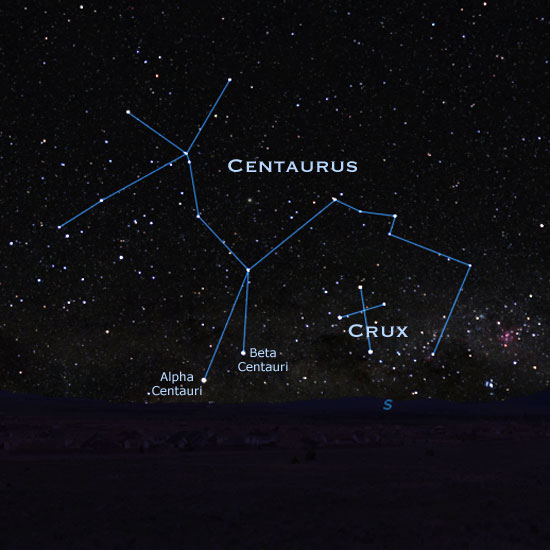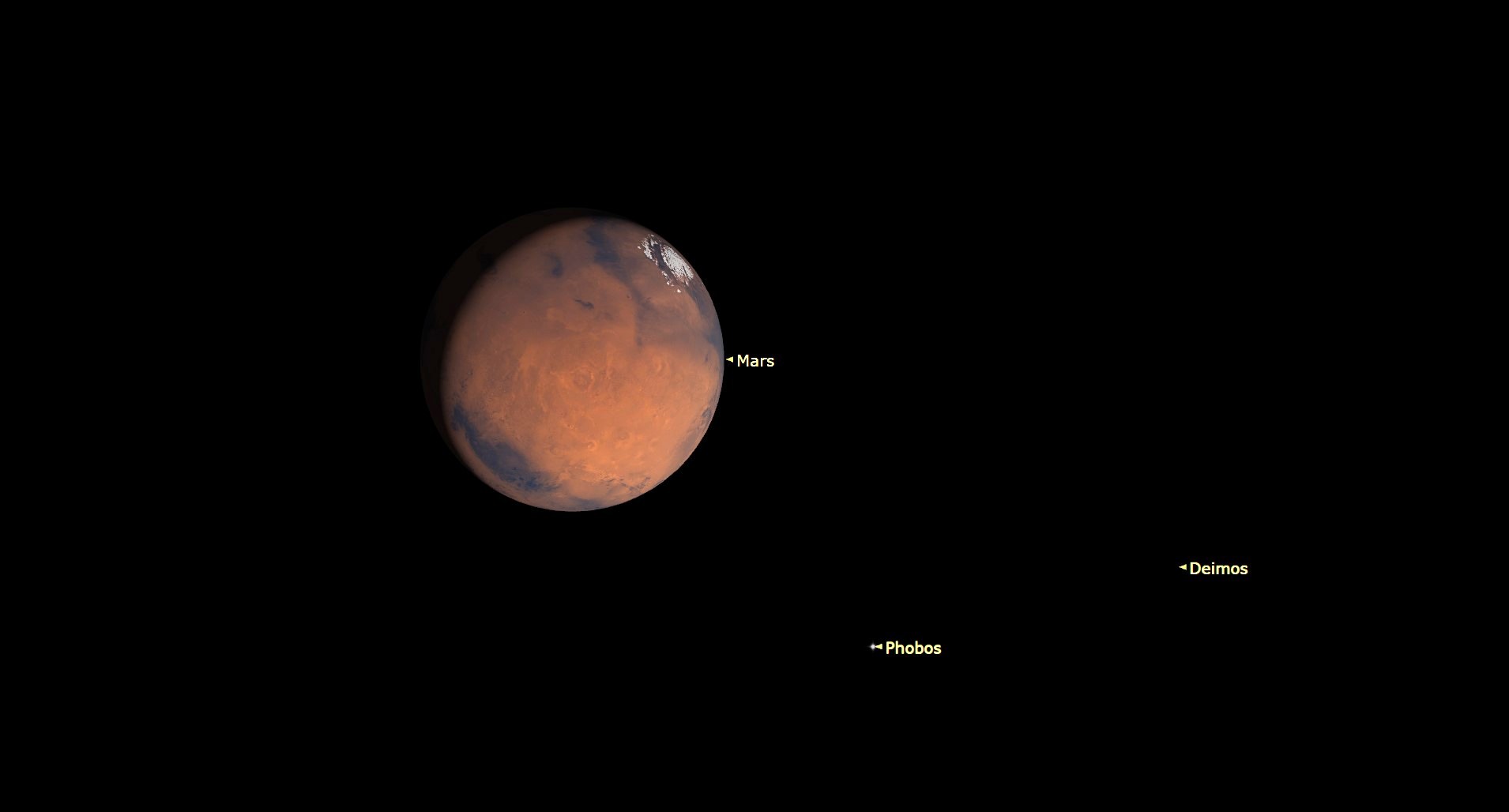Hadar: A Possible Future Binary Supernova

Hadar (also known as Agena) is a star that is visible from the Southern Hemisphere. It is the second-brightest star in the constellation Centaurus — another name for it is Beta Centauri — and the 10th brightest star in Earth's night sky.
Like many bright stars, however, appearances are not everything: Hadar is actually a group of three stars. Hadar itself is a pair of twin B-class stars, while 210 Earth-sun distances away lies Hadar-B.
Both of Hadar's stars are expected to go supernova one day, but their sizes are not precisely known. The other possible fate for them is to fade into large white dwarfs once they finish burning all the fuel available.
Discovering multiple stars
No one is very sure where the name "Hadar" first arose, but astronomer David Darling points out that Agena means "knee of Centaur," the constellation to which the star belongs. ("Agena" was also the name of a docking target used during NASA's Gemini program to practice joining spacecraft together, back in the early days of the space program in the 1960s.)
The brightness of the star — its apparent magnitude is 0.61 — makes it one landmark to point toward the Southern Cross, a famous constellation in the Southern Hemisphere that is used in flags, insignia and other symbols of several countries. [The Brightest Stars in the Sky: A Starry Countdown]
Using telescopes, astronomers eventually realized that Hadar is made up of multiple stars. Hadar A, according to astronomer Jim Kaler, has two identical stars that have a mutual orbit of 357 days. They stand on average three astronomical units apart, but their orbits can vary between 0.5 and 5.5 AUs. Their masses are also believed to be, each, about 14.7 times that of the sun.
Hadar B is about 1.3 arcseconds away in Earth's sky; in real distances, it has a minimum distance of 210 AU and takes about 600 years to orbit around the twin stars in Hadar B, wrote astronomer David Darling.
Supernova coming?
There's some debate as to whether Hadar's twin stars will go supernova one day, although astronomers believe that is the most likely fate for the binaries.
"The twins that make up Hadar-A are some 12 million years old and due to quickly expand to become red supergiants prior to exploding as supernovae," wrote Darling. (Bear in mind that "quickly" means something different in astronomical terms than in human terms.)
Kaler pointed out that measurements of the masses of the stars vary depending on what metric is being used. Interferometry suggests the stars have masses of 10.7 and 10.3 times the size of the sun, smaller than the threshold required to push them into a supernova near the end of their lives.
"If so, then the stars may escape destruction to become massive white dwarfs. Only time, or more study, will tell," Kaler wrote.
Separately, at least one of the stars is a Cepheid variable, which is a type of star that pulsates very rapidly. Others of that type change every 1 to every 100 days, depending on the star.
Join our Space Forums to keep talking space on the latest missions, night sky and more! And if you have a news tip, correction or comment, let us know at: community@space.com.
Get the Space.com Newsletter
Breaking space news, the latest updates on rocket launches, skywatching events and more!

Elizabeth Howell (she/her), Ph.D., was a staff writer in the spaceflight channel between 2022 and 2024 specializing in Canadian space news. She was contributing writer for Space.com for 10 years from 2012 to 2024. Elizabeth's reporting includes multiple exclusives with the White House, leading world coverage about a lost-and-found space tomato on the International Space Station, witnessing five human spaceflight launches on two continents, flying parabolic, working inside a spacesuit, and participating in a simulated Mars mission. Her latest book, "Why Am I Taller?" (ECW Press, 2022) is co-written with astronaut Dave Williams.
